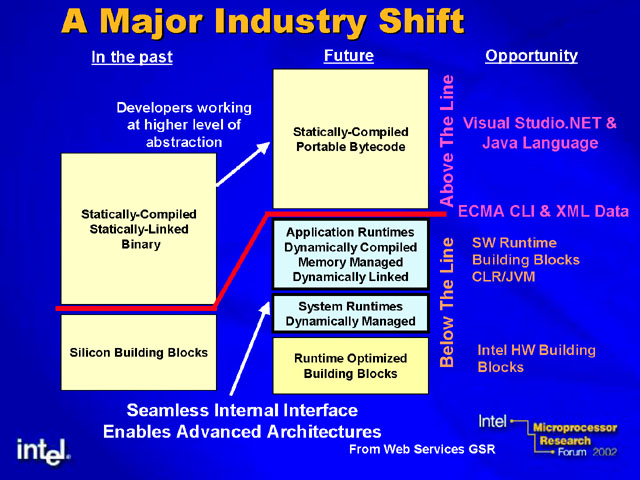I think Peddie went too far in the other direction. CELL is an excellent desktop chip for not just games, but home media, and DCC work. It will run ported apps like Adobe Premiere/After Effects much faster than any dual core Pentium.
The fact of the matter is, for desktop users, scalar performance is good enough. Productivity apps don't need much more performance, especially since alot of their performance is dictated by system I/O anyway.
As for server, CELL isn't optimal, but neither is Intel's architecture. I think Sun's Niagara processor is the right approach for most server tasks.
The Wintel ISA sucks, is at a dead end, and multicore is a quick hack to save it. Simplified execution units and multithreading is the future of server processing. Server tasks are inherently multithreaded, the server apps are already written that way, so that expanding horizontally with lots of execution units is the way to go, not uber out of order mega-deep mega-cache pipelines.
The fact of the matter is, for desktop users, scalar performance is good enough. Productivity apps don't need much more performance, especially since alot of their performance is dictated by system I/O anyway.
As for server, CELL isn't optimal, but neither is Intel's architecture. I think Sun's Niagara processor is the right approach for most server tasks.
The Wintel ISA sucks, is at a dead end, and multicore is a quick hack to save it. Simplified execution units and multithreading is the future of server processing. Server tasks are inherently multithreaded, the server apps are already written that way, so that expanding horizontally with lots of execution units is the way to go, not uber out of order mega-deep mega-cache pipelines.

